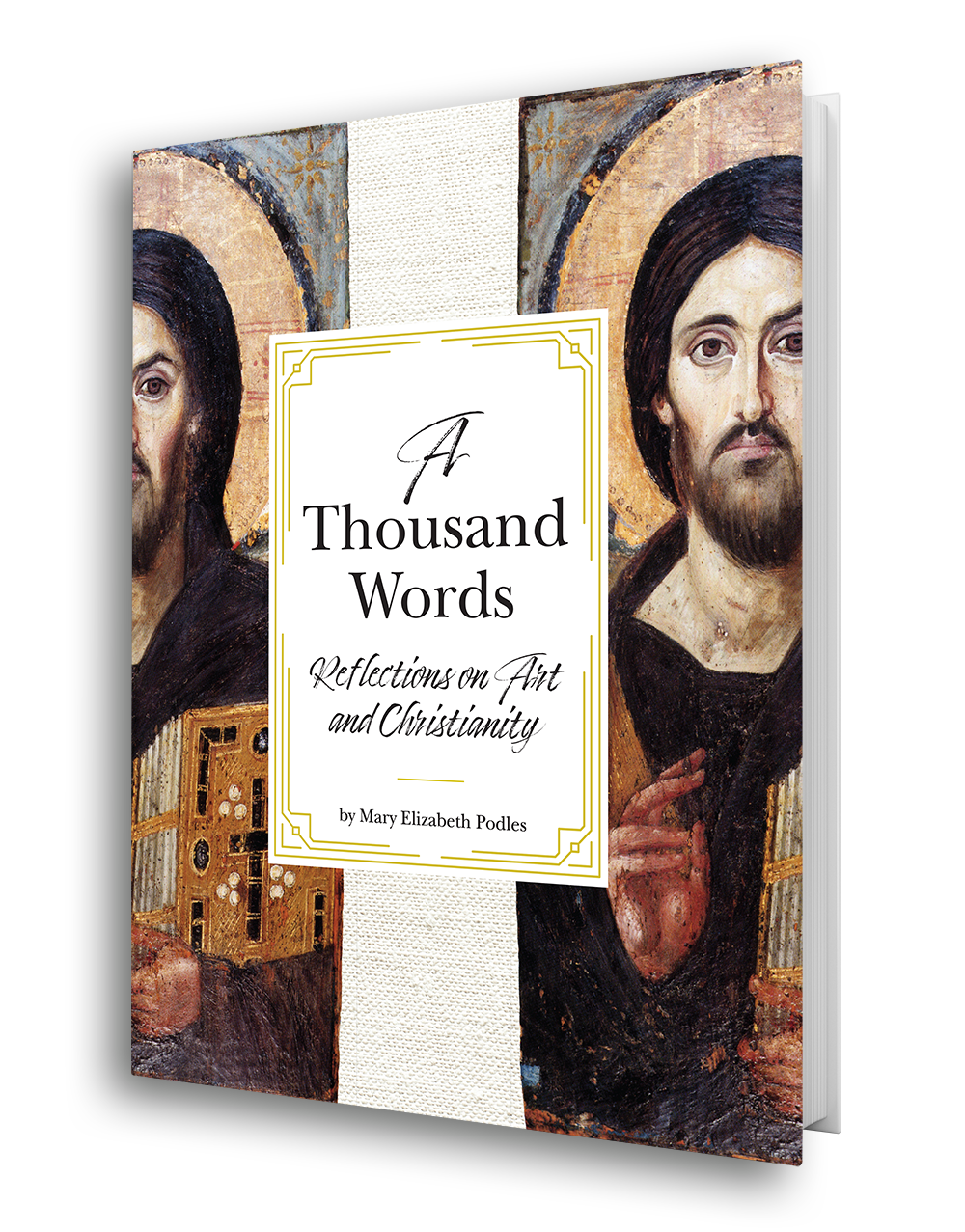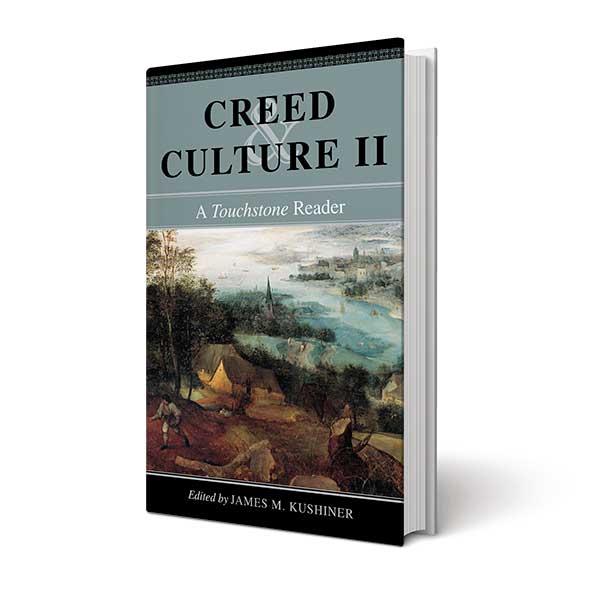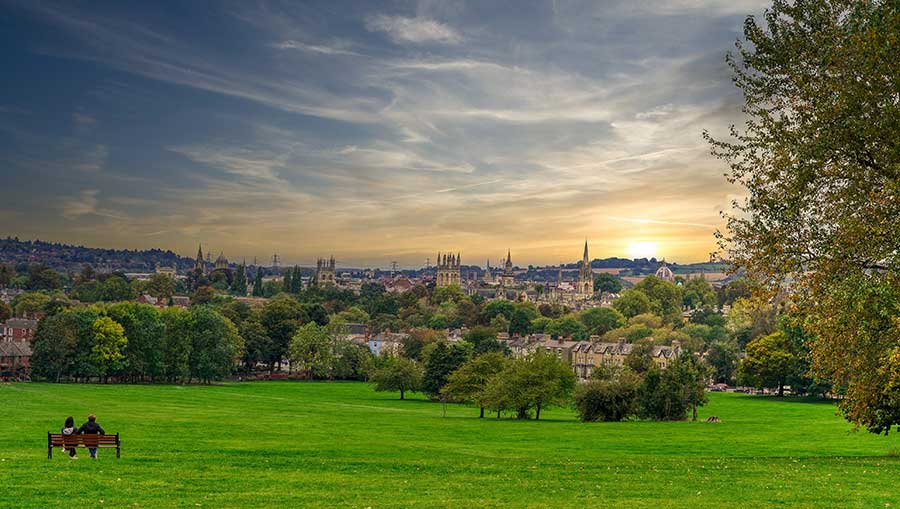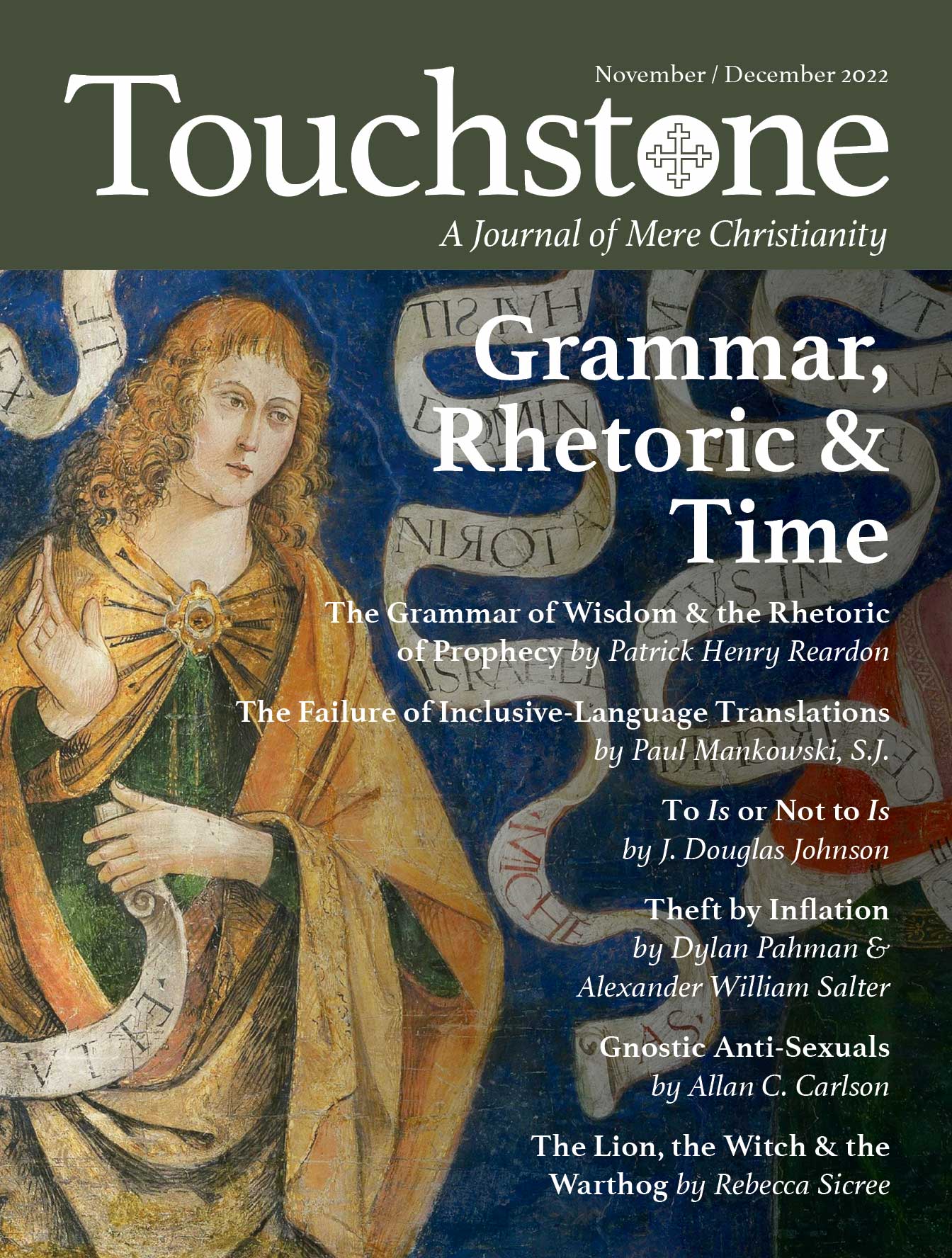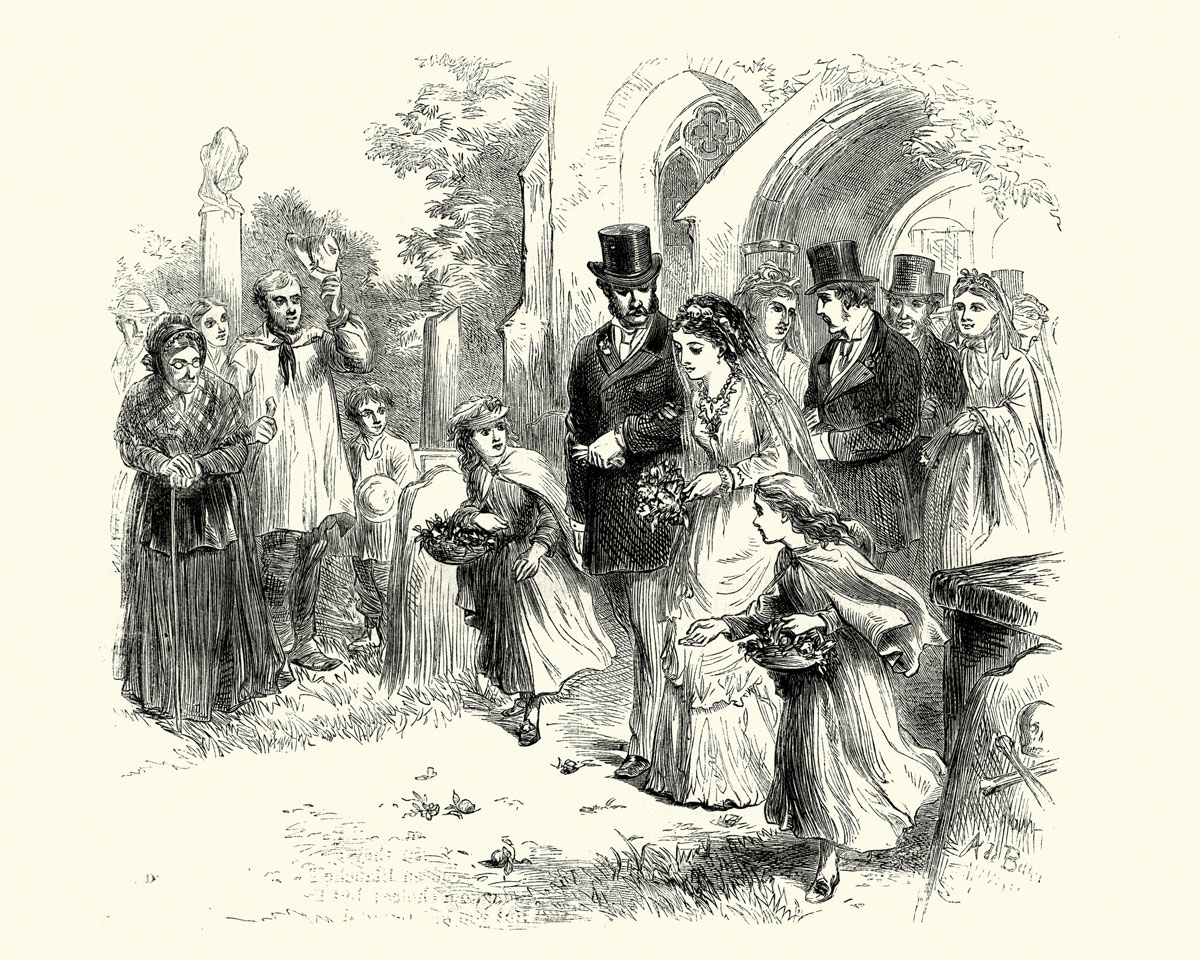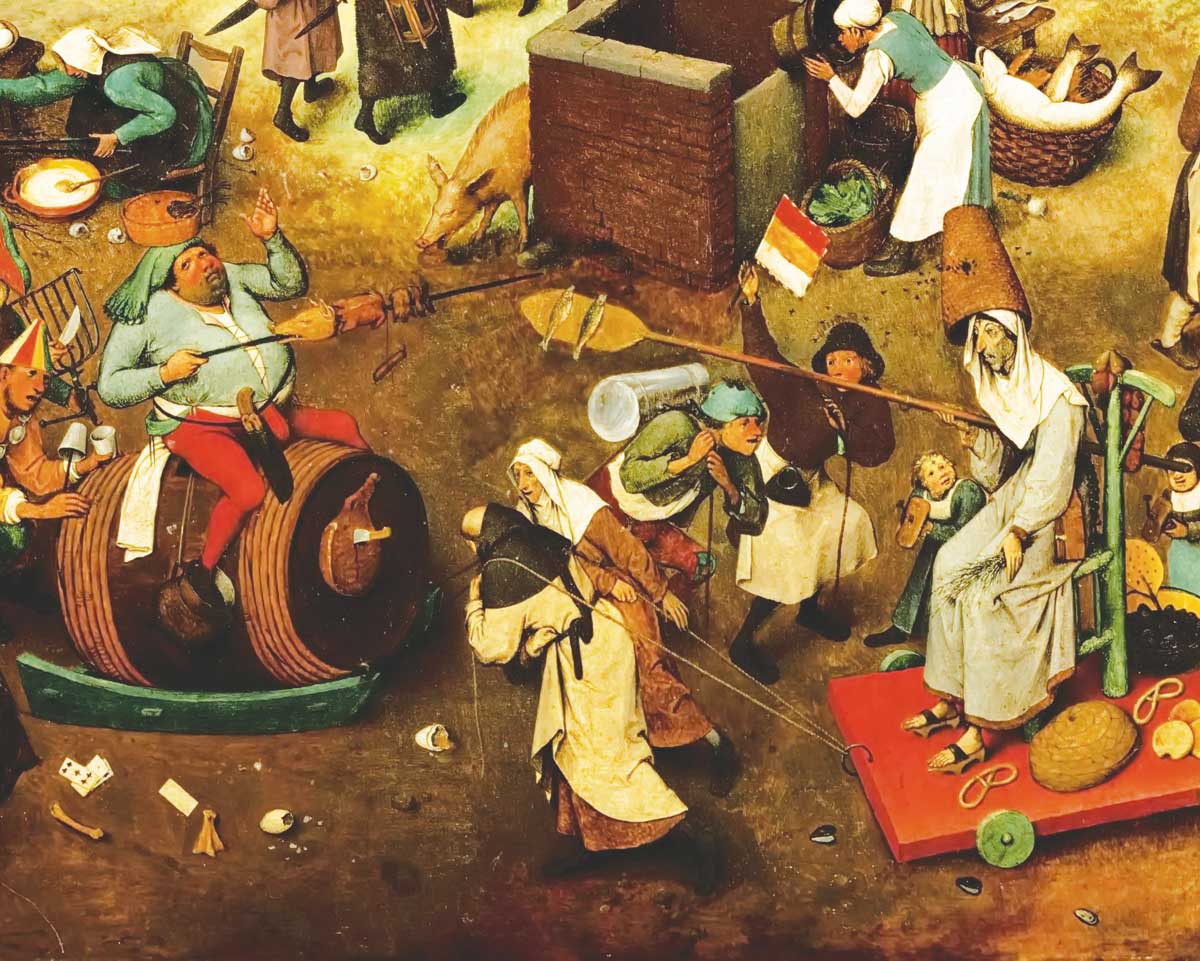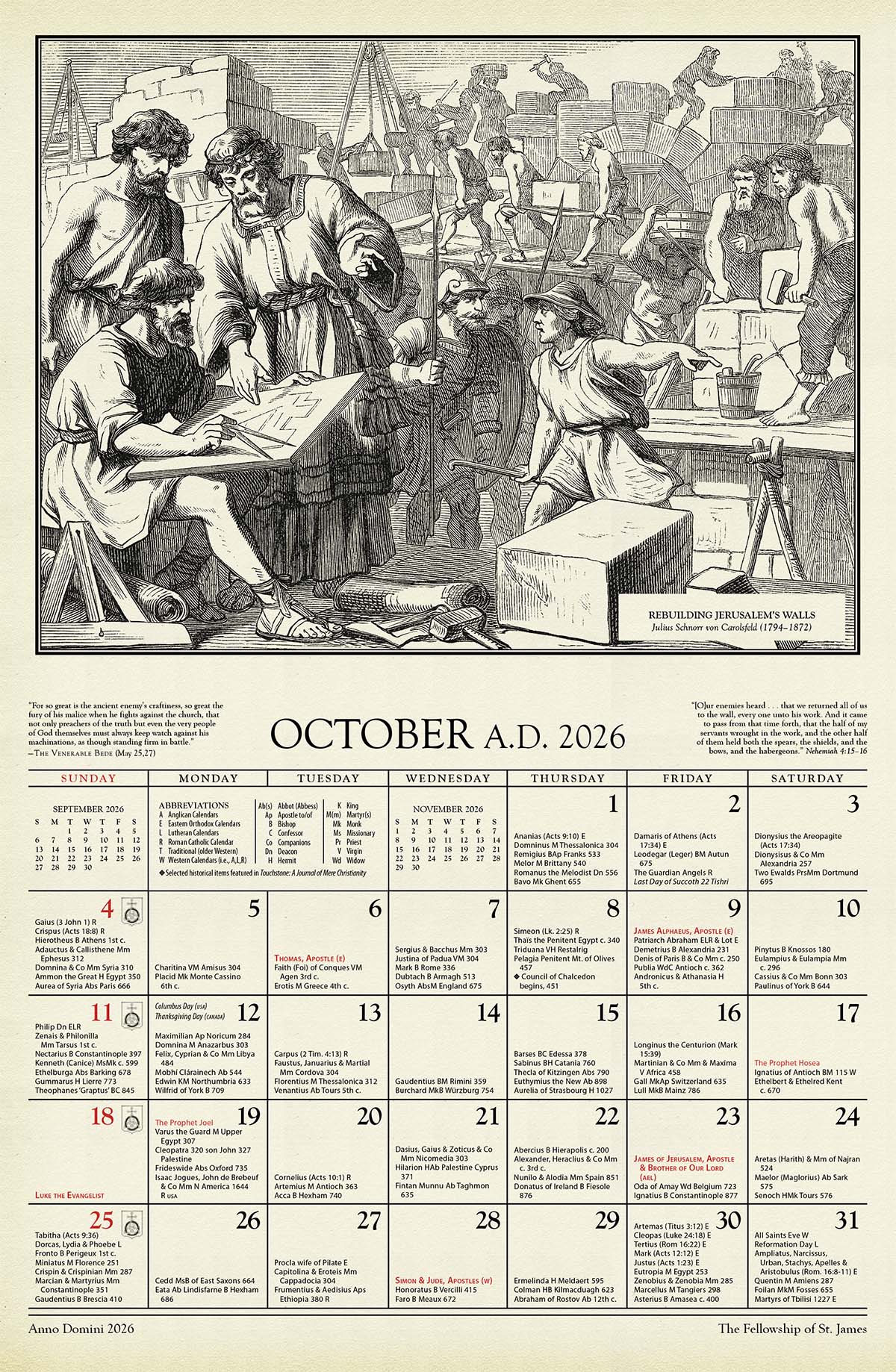Old School Beauty
On the Ennobling Presence of a Goodly Place
I was a doctoral student in Oxford when I was offered, and accepted, a tenure-track position at Princeton University. One of my dearest Oxford friends was the dean of my college—known as “New College,” though by the time I was a student there, it was very old (it had been new in 1379). The dean, whose name was John Cowan, was an Oxford don of the old school. His field was modern languages, and he was known as an excellent tutor, especially for students learning German and studying German literature. He was of the last generation of Oxford dons for which having a doctorate was not a requirement or even an expectation—and he didn’t have one. Nor was he a publishing scholar—he was also of the last generation for which scholarly publications were not necessary, so long as one was a person of learning and an excellent teacher. I suspect that the last piece of academic writing John ever did was his final undergraduate examination when he was himself an Oxford undergraduate.
As dean, he was the college’s chief disciplinary officer. The term “disciplinary” includes all that it connotes for those familiar with American colleges and universities—the responsibility for dealing with students who have gotten into trouble for academic dishonesty and other offenses—but it includes other things, too. The dean was also what at an American university might be called “the Vice President for Student Life,” the official responsible for the overall well-being of students entrusted to the college’s care. And John was the perfect person for that job—perfect because he was wise. He possessed the virtue of prudentia—practical wisdom. He knew what supported and advanced, and what impeded and undermined, the happiness and all-around flourishing of young men and women.
Unusual Words
When I received the Princeton offer, his words of congratulation did not have to do with the intellectual eminence or prestige of Princeton University, though he was no doubt aware of these things. What he said to me, rather, was this: “That is good, Robby. I’ve never been to Princeton, but I’ve been told that it is a beautiful place. It’s important to live in a beautiful place. It’s good that you and Cindy will be bringing up your children in a beautiful place.”
I remember John’s words so vividly because no one else said anything of the kind to me. Generous words of congratulation flowed in from friends and acquaintances of every description, but my other well-wishers focused on Princeton’s intellectual standing and prestige. Only my wise friend the dean zeroed in on the value and importance of the beauty of the place—for my own well-being and the well-being of my wife and our future children.
I must confess, however, that at the time I failed to see the wisdom of his comment. I thought it was interesting, but only because it was unusual and, I suppose, because I thought of it as reflecting a certain charming, if quirky, sensibility. John was a charming and quirky guy, at least for the times in which he lived, because he was such an old school character—a kind of relic of the past, a remnant of what I call “the old Oxford.” He was a sort of Edwardian figure, perhaps even a Victorian one, and indeed, something of a Dickensian one.
But he was right. It is important to live in a beautiful place—or at least a place that is not ugly. It’s valuable to children—not the most valuable thing, or the only valuable thing, and certainly not the only thing that matters to children’s welfare, but nevertheless a valuable thing, a contribution to the flourishing of children, for them to be surrounded by beauty.
The Goodness of Human Goods
That’s because beauty, including beautiful form, is ennobling. Sometimes in dramatic ways, but much more often in subtle ways, it is inspiring. And it inspires us to aspire to things that are worth aspiring to—things that, like beauty itself, are intrinsically and inherently enriching of the human spirit, ennobling.
As my work and the philosophical work of others have sought to show, the human good is variegated. There is not just one basic aspect of human well-being and fulfillment, but many. The appreciation of beauty is one. The pursuit of knowledge is another. The activity of friendship is yet another. And there are more. These human goods are “basic” inasmuch as they are reducible neither to each other nor to some substantive feature or factor that they have in common but merely manifest differently. They are irreducible.
We predicate the “goodness” of the basic human goods not univocally—as if they were all of the same substance but differed in respect of accidental properties or appearances—but analogically. Each of the basic human goods, or category of basic human good, is a good in the sense that it is something worth having or doing, and that we can understand to be worth having or doing, not merely as a means to some other end, but for its own sake, as an end in itself. It provides a reason for acting whose intelligibility depends on no further or deeper reason, or subrational source of motivation, to which it is merely a means. In that way, basic human goods are intrinsic, rather than merely instrumental goods.
The value of instrumental goods—things like money, status, influence, power, medicine, insurance policies—is purely as means to other ends, ends that are extrinsic to such goods. Things that are intrinsically good, by contrast, are valuable for their own sake, quite apart from and in addition to any instrumental value they might also happen to have. The value of money or power or medicine is entirely dependent on the ends to which these things are put. The fundamental value of friendship or knowledge or beauty is dependent on nothing beyond the thing itself. That’s what I mean by saying that they are intelligibly worth wanting for their own sakes. A basic human good is something that provides an ultimate explanation or answer to the question, “Why would someone do that?”
More than Simply Pleasant
Now, imagine a place that is ugly but not dangerous. Would you want to live there if you had the option of living in a place that wasn’t so ugly? Would you want to bring up your children there? Or would you jump at the chance to bring them up in a place that wasn’t so ugly, assuming that all other things were equal? I suspect you’d jump at the chance. I certainly would.
Now let’s ask ourselves why we would. One answer, and I suspect part of any complete answer, is simply that it’s more pleasant to be in beautiful surroundings than in ugly ones. Again, hold everything else constant—cost, safety, quality of available schools for the kids, and so forth; the only difference between the options is that the one set of surroundings is beautiful, the other ugly. Are we left with a toss-up? Would we be indifferent as between the options? Would we have no reason to choose one over the other? No. Even if the only difference between beautiful and ugly surroundings were that it is more pleasant to be in beautiful ones, that would be a reason, indeed a decisive one, to choose them.
And no explanation beyond the fact that the beautiful surroundings are more pleasant would be required to account for the intelligibility of the choice. We don’t need a further or deeper reason to explain the desirability of pleasant surroundings as opposed to unpleasant ones. It’s intrinsically desirable to be in more pleasant surroundings.
Yet I think we would agree that our reasons for choosing beautiful over ugly surroundings, especially as places to live, work, and raise a family, go beyond simple pleasantness. This is where that concept I introduced a moment ago comes in: the concept of ennobling. Not everything that’s pleasant is ennobling. That is to take nothing away from, or to denigrate or disparage, things that are merely pleasant. I enjoy and value a nice cup of coffee or tea or a glass of excellent wine as much as the next guy. But the pleasant taste (even when we add all the details about, say, soothing warmth, complexity of flavors, pleasing mouthfeel, etc.) is not ennobling. So let’s talk a bit about the concept of ennobling and what ennobles.
How We Are Ennobled
Something is ennobling when it enriches us intellectually, morally, and/or spiritually. But when I say “it enriches us,” I am courting misunderstanding. Ennoblement isn’t something we passively experience. It happens only with, as it were, stimulus and response—although that way of putting it also courts misunderstanding by suggesting that it is mechanical, when it is certainly nothing of the kind. Here’s what I’m driving at. Something ennobles us when it prompts or invites us to be better—intellectually, morally, or spiritually—and we respond to the prompt or invitation by actively becoming better, by doing what it takes to enrich ourselves or allow ourselves to be enriched intellectually, morally, or spiritually.
Many things in addition to beauty are, or can be, ennobling (as I am using the term here). What matters for our purposes, however, is that beauty is ennobling, it is among the things that ennoble. When we perceive, contemplate, enjoy, or appreciate something beautiful, it is enriching—and not merely because it is pleasing or pleasant. When beauty, or anything else, invites us to be better, to go higher, intellectually, morally, or spiritually, and when we respond, we are ennobled.
What I’m pointing to here is true whether the beauty we contemplate and appreciate is natural beauty (say the sunset or a landscape) or man-made beautiful form, as in painting, sculpture, architecture, music, and so forth. I think this insight is, or at least once was, behind the efforts people made, and the lengths to which they went, to make not only their homes and neighborhoods beautiful to the extent possible, but also—and particularly—to make sure that institutions devoted to intellectual and spiritual life were beautiful.
Think particularly of the architecture of churches and other houses of worship and of universities, colleges, and schools. I say “once was” because today we are all familiar with churches and campus buildings that were evidently deliberately designed to be ugly. I don’t know whether the architects and those commissioning them don’t know the difference between the beautiful and the ugly, or whether they are aware of it (at some level) but don’t think it’s important, or whether they believe there is some point or value in having ugly churches and academic buildings, or whether the ugly buildings are supposed to make some sort of statement or send some sort of message, or what. But we all know about beautiful religious and educational buildings—at the very apex, buildings like the cathedral at Chartres and the magnificent medieval architecture at the Universities of Oxford and Cambridge.
And we know that these buildings, and often the gardens and other features surrounding them, were designed to be beautiful. It was no accident. In fact, the people who requested, designed, and built beautiful churches and collegiate buildings made them beautiful precisely to create an ambience, a milieu suited to their purposes as centers of faith and learning. They knew that beauty was ennobling, that beautiful surroundings could inspire the faithful and students and scholars, and cause them to aspire to be better, to go higher—and, we could add, to go deeper, to deepen the faith of the believer and the understanding of the scholar.
The examples I’ve particularly noted, the cathedral at Chartres and the buildings of Oxford and Cambridge, happen to be medieval, but I don’t mean to suggest that only medieval architecture can be beautiful, ennobling, and inspiring. Obviously, lots of types of architecture, from lots of different time periods and from many different societies, cultures, and civilizations can be beautiful, ennobling, and inspiring. The same, of course, is true of beautiful form in all media—drawing, painting, calligraphy, sculpture, music, poetry, and so on.
No Mere Matter of Taste
“But,” someone will say, “beauty is in the eye of the beholder.” No, it’s not. There’s nobody for whom the cathedral at Chartres, or Pachelbel’s Canon in D Major, or Michelangelo’s Pieta, or Dante’s poetry is not beautiful. Nor is there anybody for whom the rubble of Hiroshima or the piles of corpses in Hitler’s death camps are anything other than ugly—in every sense. This is not to say that true or even good art or architecture must be beautiful. Nor is it to deny that there are legitimate debates about whether this or that putatively beautiful thing is or is not, in truth, beautiful. It is simply to say that beauty is not purely subjective. It is not just a matter of taste.
And it is also true that while the appreciation of beauty in some things requires little cultivation, it can sometimes require a great deal of cultivation. And even in the case of those things whose beauty is appreciated immediately by everyone, cultivation often makes possible a deeper appreciation.
The appreciation of beauty, which is obviously linked to its capacity to ennoble and inspire, is not merely a matter of the intellect, but it undeniably has intellectual components. Human beings can critically appreciate beauty at all because we are rational creatures. Our emotions are integrated with and, in the properly ordered soul (or, if you insist, “personality”), shaped, guided, and governed by our intellects. A beautiful brute animal, say a magnificent stag, in a beautiful woodland valley formed by beautiful mountains, cannot, we must assume, appreciate the beauty of his surroundings or be ennobled and inspired by them. But we can appreciate his beauty, especially in so beautiful a setting, and be ennobled and inspired by it.
Good for Children
Having said all this, I do not want to overclaim. So let me return to something I said near the beginning. Beauty is not the only good, nor is it the highest good. Beauty, when we properly appreciate it, can be ennobling and inspiring, but by itself it cannot save us. Nor is it the answer to all the great existential questions, or the solution to all our problems, or the magic cure for what ails us today—though more beauty and less ugliness would certainly help.
If you had to make the choice for a child as to whether to have him raised by loving and virtuous parents in ugly surroundings or by gangsters in beautiful surroundings, you would, of course, choose the former. But loving and virtuous parents, precisely because they are loving and virtuous—because they want the best for their children and recognize that beauty is ennobling—will want to bring up their children in a beautiful place if they possibly can. By the same token, while they will not want for their children an antiseptic environment where they never encounter the reality of ugliness, they will want their children to know beauty and cultivate an appreciation of it. And they will be willing to make sacrifices, if necessary, to enable their children to experience and appreciate beauty.
There are, alas, good parents for whom circumstances are such that even with sacrifices they are not able to escape conditions of ugliness, nor are they able to provide for their children many opportunities to experience and learn to appreciate beauty. This is tragic and should be taken by us as a challenge. Just as we should desire that all children be decently fed, looked after, kept safe, educated, and given opportunities for recreation, we should also desire them to experience beauty, so they can come to appreciate and be ennobled and inspired by it.
Don’t Leave It to the “Experts”
Just how to do this is a matter for discussion. There are many different ways, and I suspect that all of us have a role to play. But perhaps such discussions should begin with a recognition of the importance of beauty, precisely because it is more than merely pleasant, but is ennobling and inspiring. And we need to recover our sense that beauty really is to be preferred to ugliness—that there is a difference between the two and that it is not just a matter of taste, like preferring chocolate ice cream to vanilla or tea to coffee.
In fact, let me go out on a limb here and say that, to the extent of our influence, we should discourage, say, the building of ugly buildings and encourage the building of beautiful ones. I would especially encourage people with any degree of influence in religion or education to use that influence to discourage the building of ugly churches and educational buildings at any level and to encourage the building of beautiful ones.
Of course, we need to be careful not to embrace too narrow a conception of beauty, identifying it unreasonably with a particular tradition or period (say, Renaissance Italian or early French gothic). We should not identify the beautiful simply with our tastes or preferences. We should be truly broadminded and pluralistic—recognizing beauty in its manifold forms.
But when what is being proposed is ugly or falls short of what is capable of inspiring people—especially young people—to aspire to be better and to aim and go higher, we should not hesitate to say so. When someone is proposing to build for the religious congregation to which we belong what is in truth an ugly church, we should not hesitate to say, “No, we mustn’t accept that design—it’s ugly.” Politesse, or fear of coming across as “unsophisticated” or out of step with the cognoscenti—the experts, the sophisticated people, the avant-garde—should not cause us to say of a design for an ugly church, “That’s interesting; maybe that would be okay.”
If there’s a debate about whether or not a proposed design for, say, a church or school in your community is or isn’t beautiful, join the debate. Express your point of view. Do it the way you should in any debate—that is, not dogmatically or in a bullying spirit, but with a willingness to learn and to change your mind if persuasive reasons and arguments are presented—but don’t simply yield to people who allegedly are aesthetic experts.
Aesthetic expertise and the lack of it are, as it happens, rather democratically distributed. The ugly skyscrapers marring the skylines of so many cities, the ugly churches and synagogues inspiring almost nobody, and the ugly schools and campus buildings that have been built over the past seven decades or so should tell you all you need to know about the aesthetic expertise of the so-called experts.
Just ask yourself the question, do such buildings ennoble anyone? Do they inspire us? Do they inspire our children to aspire to intellectual, moral, or spiritual excellence? Or do they send a rather different message about the human condition, about what we human beings are, what we are capable of, what we can achieve, what we should aspire to do and to be?
And that, really, is what it’s all about. That’s what the dean of New College was saying to me when he said that “it’s important to live in a beautiful place.” He wasn’t expressing the charmingly quirky view of a Victorian character out of a Dickens novel. He was expressing true practical wisdom. Prudentia.
Robert P. George is McCormick Professor of Jurisprudence and Director of the James Madison Program in American Ideals and Institutions at Princeton University (web.princeton.edu/sites/jmadison). His books include In Defense of Natural Law (Oxford University Press) and Conscience and Its Enemies (ISI Books). He has served as chairman of the U.S. Commission on International Religious Freedom. He is a senior editor of Touchstone.
Share this article with non-subscribers:
https://www.touchstonemag.com/archives/article.php?id=35-06-042-f&readcode=10861
subscription options
Order
Print/Online Subscription
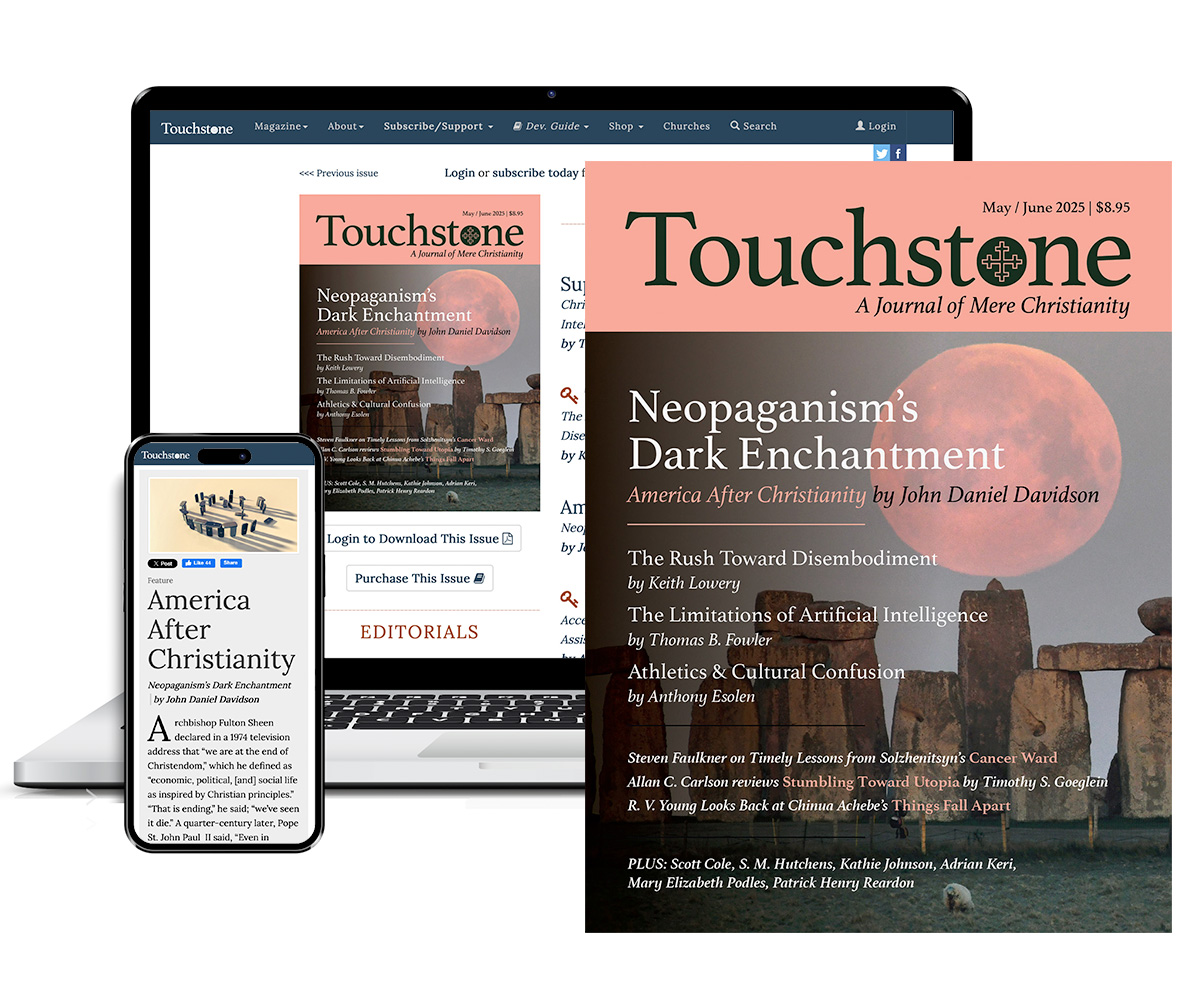
Get six issues (one year) of Touchstone PLUS full online access including pdf downloads for only $39.95. That's only $3.34 per month!
Order
Online Only
Subscription

Get a one-year full-access subscription to the Touchstone online archives for only $19.95. That's only $1.66 per month!
bulk subscriptions
Order Touchstone subscriptions in bulk and save $10 per sub! Each subscription includes 6 issues of Touchstone plus full online access to touchstonemag.com—including archives, videos, and pdf downloads of recent issues for only $29.95 each! Great for churches or study groups.
Transactions will be processed on a secure server.
more on theology from the online archives
more from the online archives
calling all readers
Please Donate
"There are magazines worth reading but few worth saving . . . Touchstone is just such a magazine."
—Alice von Hildebrand
"Here we do not concede one square millimeter of territory to falsehood, folly, contemporary sentimentality, or fashion. We speak the truth, and let God be our judge. . . . Touchstone is the one committedly Christian conservative journal."
—Anthony Esolen, Touchstone senior editor



